1810s Mourning Dress
As mentioned in a previous post, within Maryland Historical Society costume collection there exists a “study collection.” Curators accessioned garments and accessories into this collection often because they were incomplete ensembles or required conservation, but were still deemed useful for understanding costume history. When we process these “study” pieces, we often transfer them to the actual collection because we have discovered several magnificent pieces. (see 1790s dress). While opening a box from this collection, I literally gasped and could not contain my excitement as I realized the museum possessed a rare 1810s mourning dress in amazing condition, despite some minor flaws that are easily fixable. According to the garment's catalog card, Henrietta Haynie, daughter of Dr. Ezekiel Haynie and Betsy Polk Haynie, wore this dress.
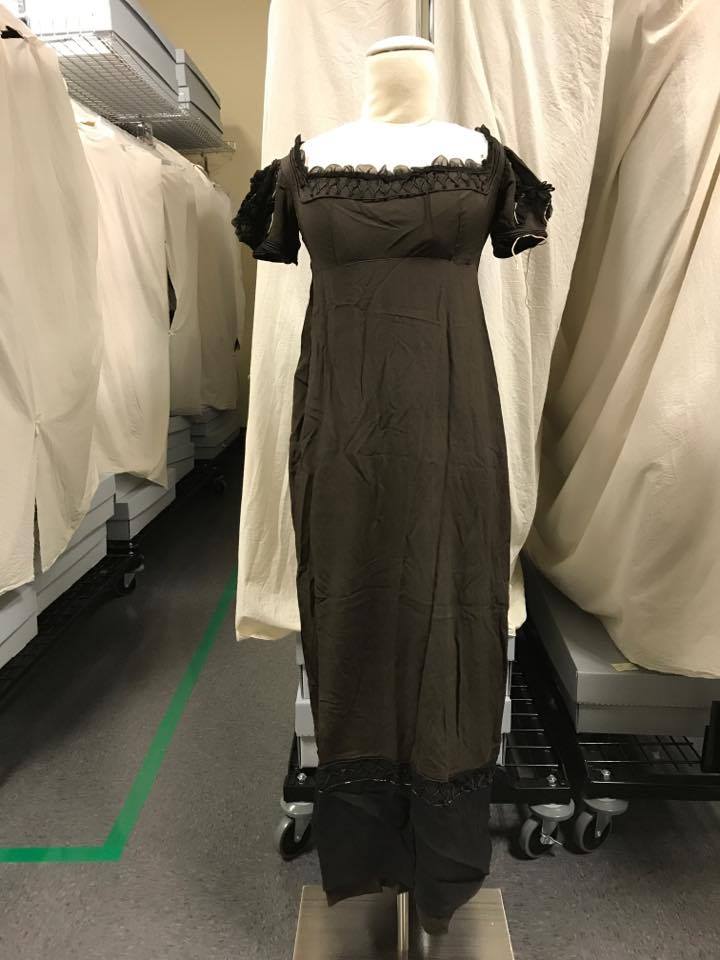 |
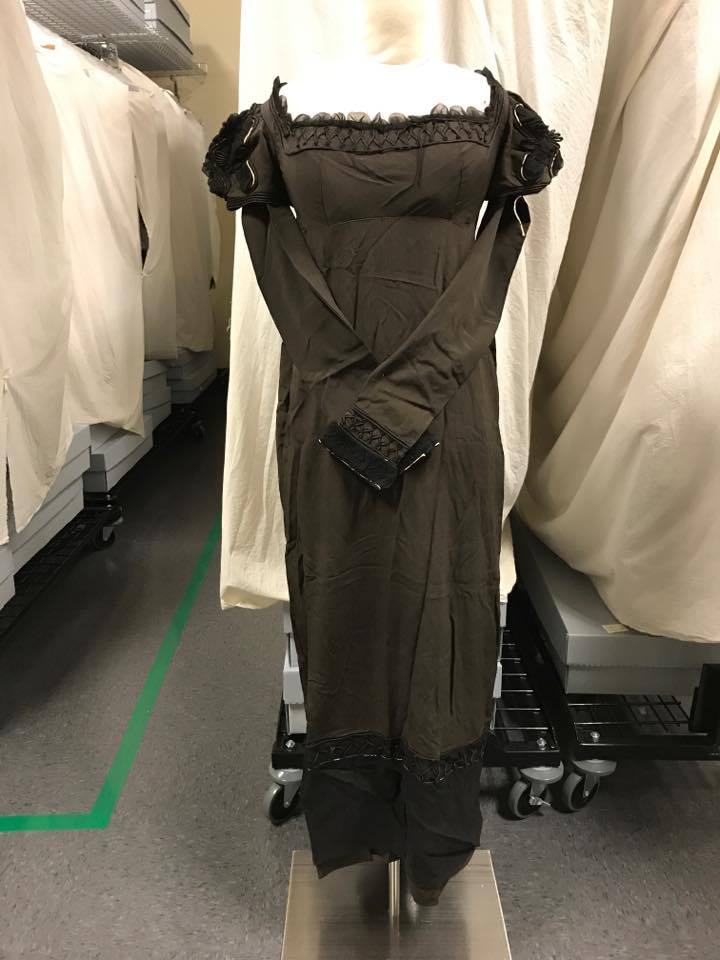 |
|
|
As seen in these photographs, the dress includes a pair of removable long sleeves, providing two different looks. 1946.52.1 Gift of Mrs. Herrmann Cohn
|
||
The only apparent reason for this dress to be relegated to this collection is for its conservation issues regarding its black, satin trim and minor alterations. As seen in photographs, the satin trim in certain areas has deteriorated, exposing the white cording meant to be covered. Another issue can be seen in the back of the dress. The left-side panel has been altered and awkwardly sewn back into place where it doesn’t match the waistline. Additionally, the buttons have been re-covered with a modern fabric.
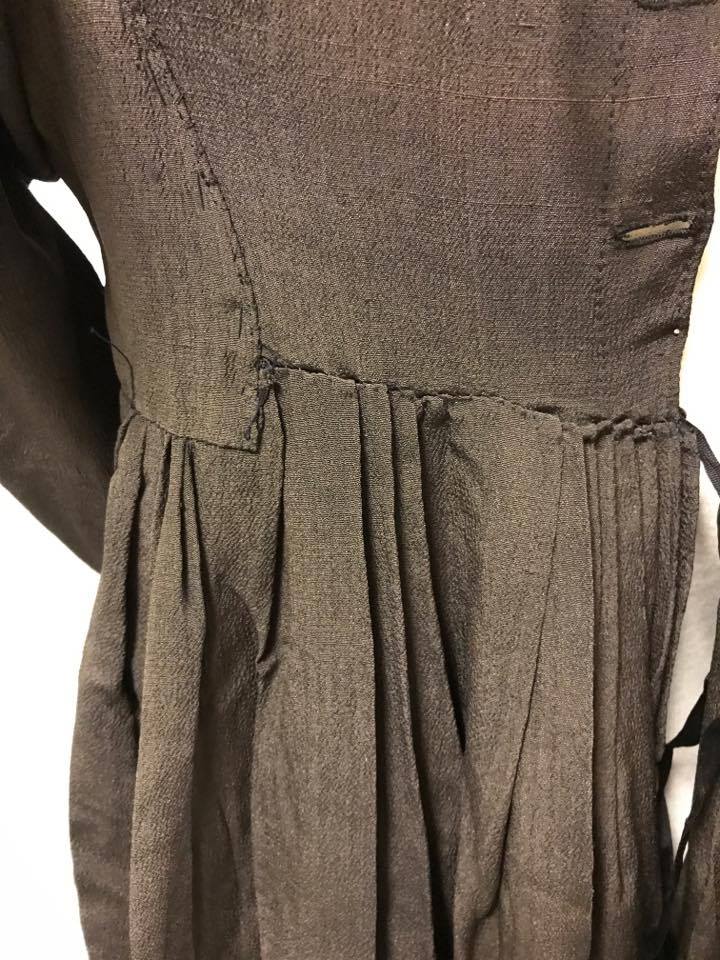 |
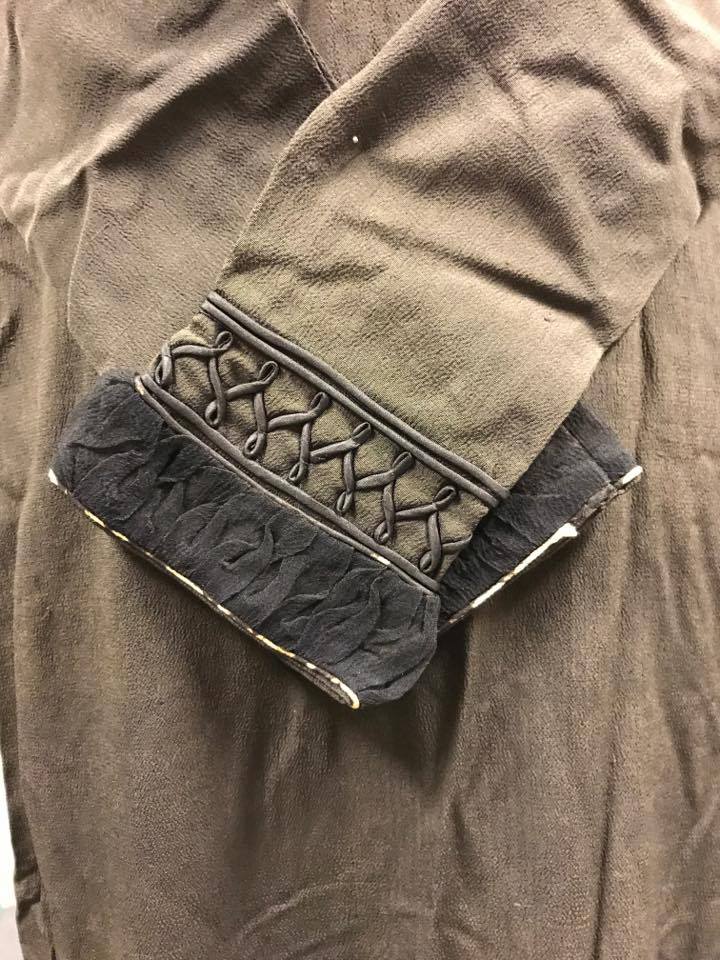 |
| Detail of altered side panel and its poor reattachment. | Cuffs of dress's long sleeves that show how the satin has deteriorated off of the corded trim. |
Mourning etiquette required wearing specific types of fabric because anything shiny was discouraged. Bombazine and crape, both mixtures of silk and wool, appeared dull, making these fabrics particularly appropriate as mourning attire. Henrietta’s mourning dress features two different weights of crape – the body of the dress is a heavier crape while the trimming and sleeve puffs are sheer. While the lighter crape trimming has retained its original dark shade, the other crape variation faded, testifying to the instability of black dye, which made obtaining mourning clothes an especially expensive affair. Because of quick fading, women were forced to redye their mourning clothes and accessories or buy new ones. Many women struggled with the dye actually staining their skin and used oxalic acid, which possessed natural bleaching qualities, to remove the residue , as seen in Godey's Lady's Book in 1849 .
This dress is wonderful as it depicts how mourning attire reflected popular fashions during this early of an era. The influence of the Italian Renaissance apparent during this era can be seen in the puffed sleeves of this dress. The cap sleeves are slashed with puffs of black crepe pulled through the holes. Passementerie trim edges the neckline, cuffs, and hem, a popular detail during this time. Henrietta's dress also features a high waist, continuing the dress's adherence to fashion trends.
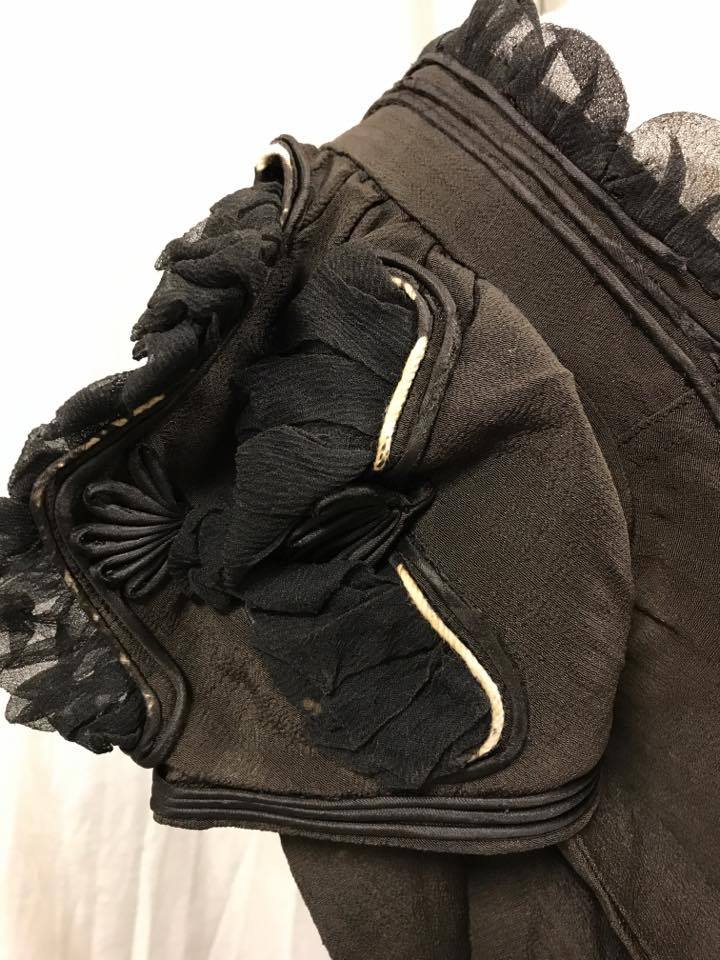
References:
Fashion: The Definitive Histroy of Costume and Style – Smithsonian Museum
Bohleke, Karin J. “Identifying Stages of Grief in Nineteenth-Century Images.” The Daguerreian Annual (2015): 166-191. http://www.academia.edu.

